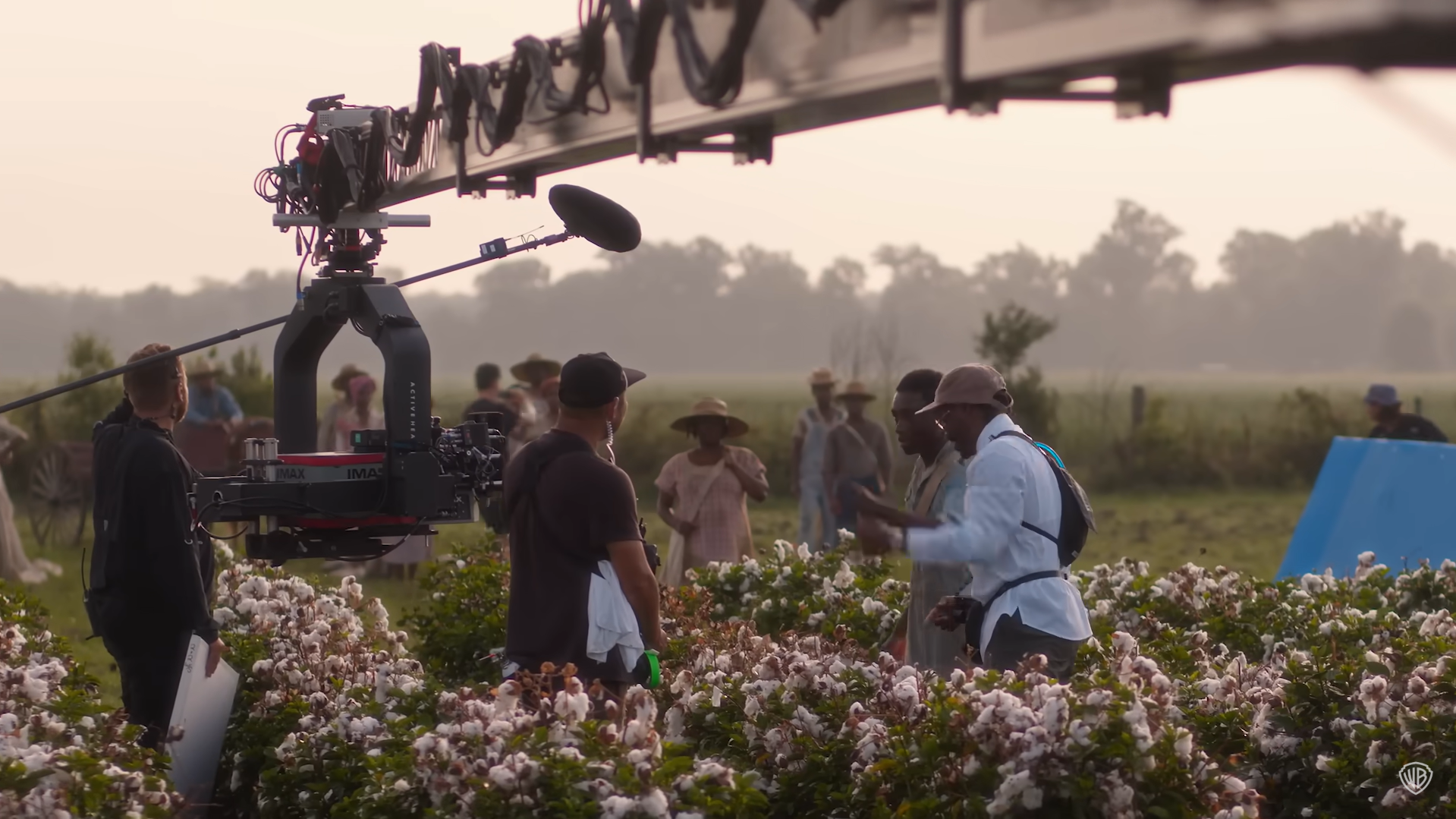Sinners captures the contrasting atmospheres of 1932 Mississippi, utilizing warm, vibrant colours in the lively juke joint scenes and darker, shadowy tones during moments of tension with the Irish vampire. It highlights themes of sacrifice, the impact of music, and the complexities of family relationships. It was shot on the IMAX MSM 9802 and MKIV Reflex cameras, along with the Panavision System 65 Studio. Additionally, Durald Arkapaw used two lenses—one IMAX (50mm and 80mm) and the other a Panavision Ultra Panatar 1.3x anamorphic.
IMAX Cameras
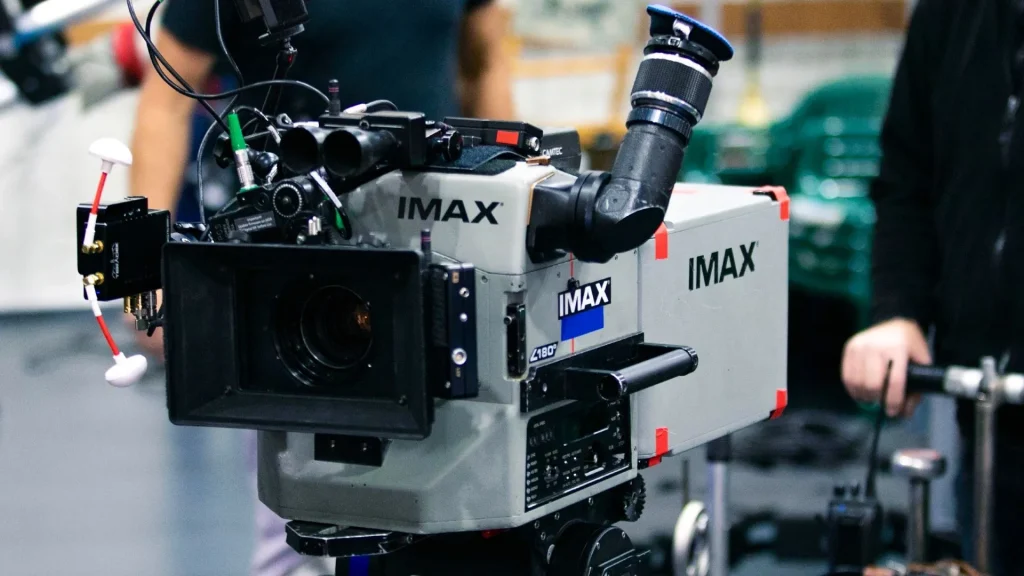
The 9802 is a frequently used IMAX camera type, alongside the Mark III and Mark IV. Although it is an older model, it offers ease of handling, featuring a quick-open gate and enhanced durability. Despite the 9802 potentially being too heavy for handheld operation, it is generally regarded as user-friendly. There were originally six MSM cameras, but some were lost or damaged during productions like Dunkirk. At least four 9802 cameras still exist. The MSM evolved from heavier IMAX models, focusing on lighter and more practical designs.
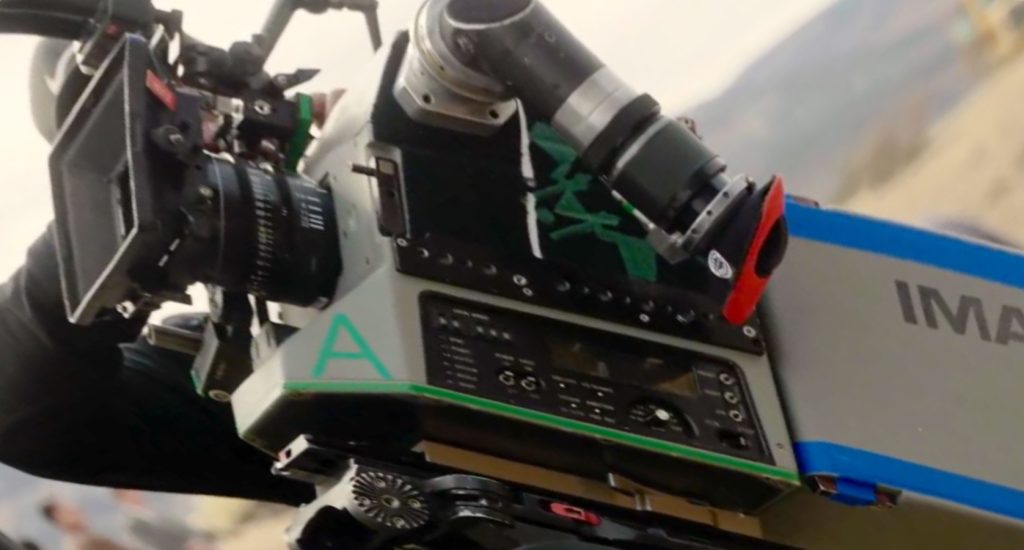
The Mark IV closely resembles the 9802, which has led to speculation that it may be a modified version of the latter. The IMAX Mark IV camera is frequently utilized for helicopter-mounted shots and is known for its enhanced durability. Due to these modifications, it is expected to be heavier, which can make handheld shooting challenging.
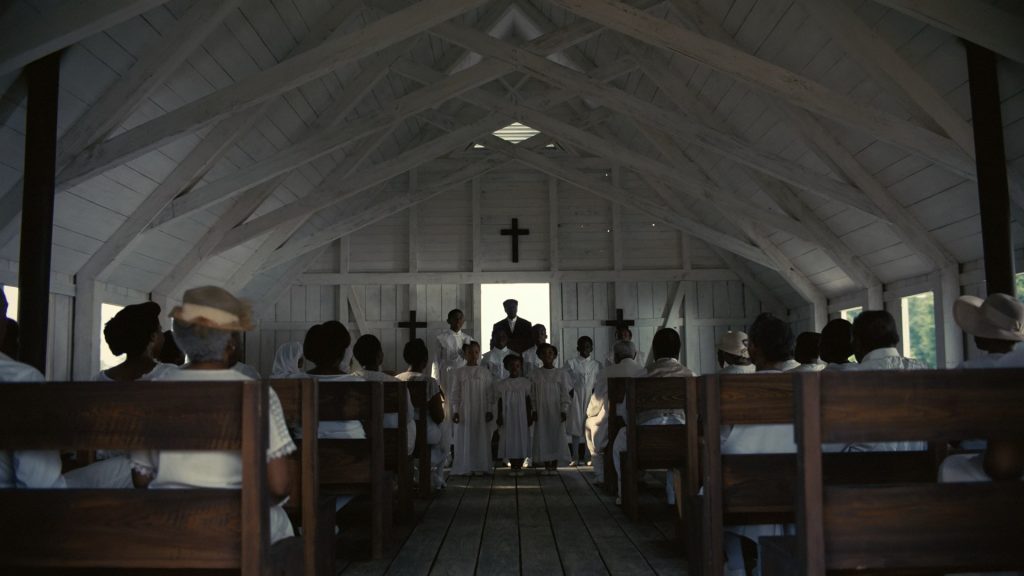
The IMAX camera captures beautifully the highlights, the contrast between the white costumes and the church interior against the dark attire and skin. The challenging crane shots were made with the 100% IMAX format.
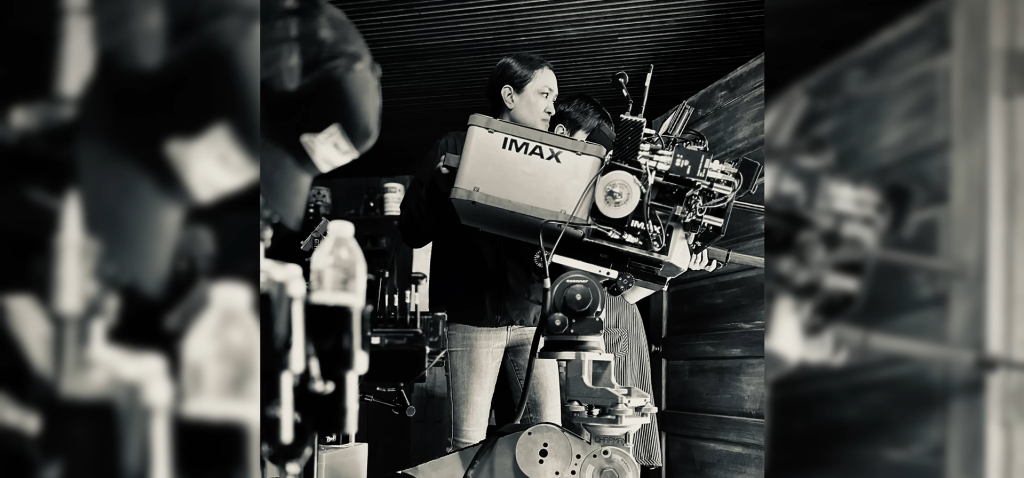
IMAX film cameras operate by spinning the film horizontally at a rate of 15 frames per second. This 15-perf IMAX camera has limitations with sound. It is technically not a sync sound camera; it’s very loud. The film strips being run through the camera are massive, and the mechanics needed to pull those strips at 24 frames per second typically generate a lot of noise. The IMAX camera is pulling the film through at 15 perf. As for the length, the IMAX roll lasts about two and a half minutes, while the system can handle eight and a half minutes. So, when the IMAX camera turns on, it creates quite a racket. IMAX is such a noisy camera for dialogue scenes.
There are three IMAX shots filmed using a Steadicam inside the mill. These shots transition into a VFX segment featuring a burning plate. The scene then shifts to a different shooting day, which takes place at night. In this exterior scene, a 50-foot movie crane pulls back and lands on the backs of the vampire characters.
The vampire fights inside and outside the juke were shot in IMAX. The movie’s standout moment in IMAX features a surreal musical scene in the juke. The live performance was shot in a single day using the 65-pound IMAX camera on a steadicam, which winds its way around the juke in three sections. The performance was so intense that it set the roof on fire, leading to a VFX shot of the burning roof, filmed on the last day. This transitioned into a 50-foot Technocrane pull-out for a night exterior shot with the vampires.
System 65 Studio Camera
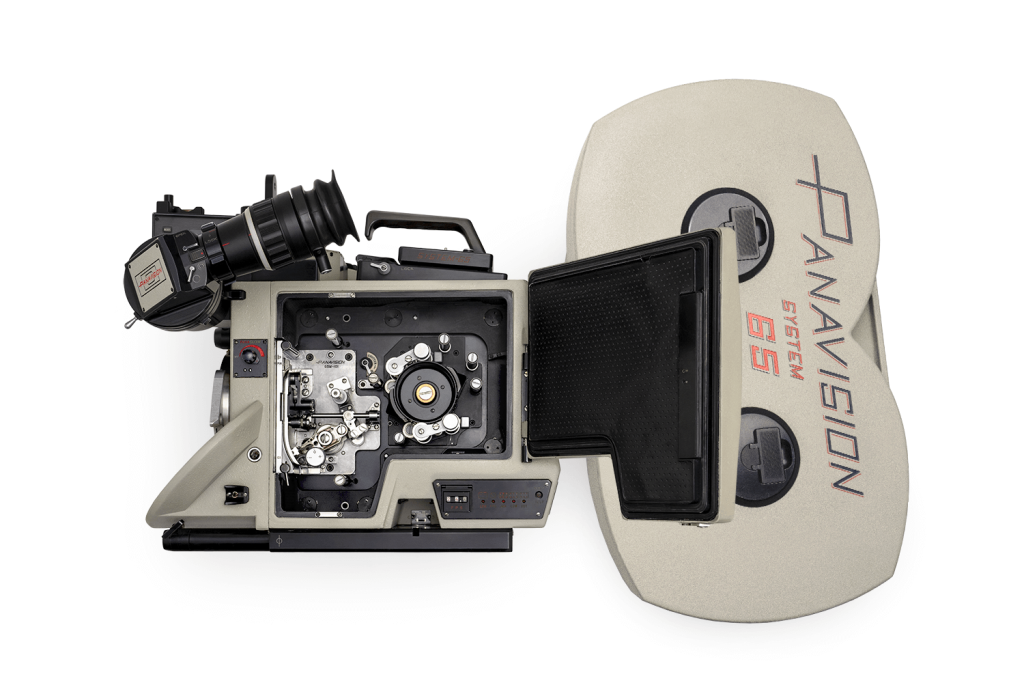
The System 65 Studio film camera features complete with full-fitting dual registration pins that ensure precise film alignment. On one side of the film, guide blocks help maintain stability during operation. The camera is also equipped with dual two-pin pull-down claws, contributing to its exceptionally low sound level of only 27dB when capturing footage, making it one of the quietest film cameras available on the market.
Variable film capacities are offered through its 400-foot and 1,000-foot displacement film magazines, providing flexibility in mounting options. These magazines can be positioned on top of the camera to decrease overall length or mounted at the rear to minimize height, accommodating various shooting needs and environments. Furthermore, the System 65 Studio features an adjustable focal-plane shutter with a range of 50° to 180°, allowing for precise control over exposure and motion blur, enhancing the creative possibilities for filmmakers.
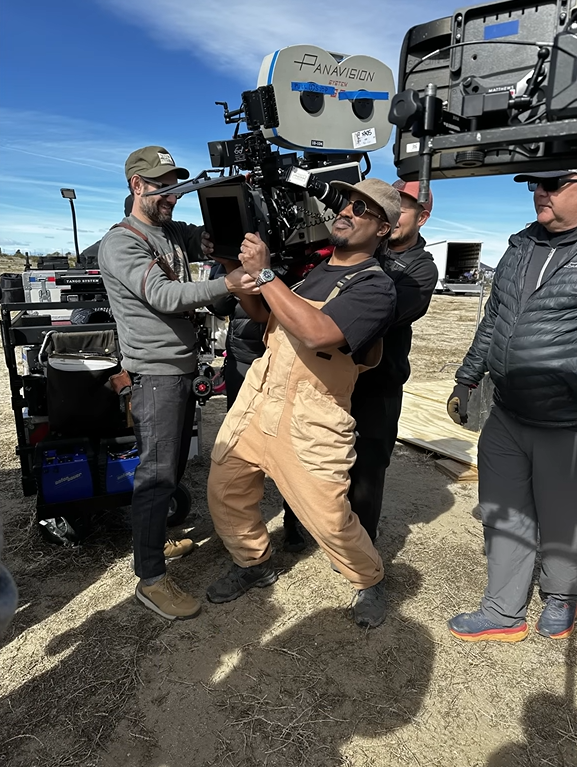
The System 65 cameras are quite heavy and difficult to manoeuvre. Once loaded, they’re not suitable for handheld shooting. On the other hand, IMAX is lighter than the System 65. However, once built up, they can become heavier. The IMAX cameras fit more comfortably on your shoulder, and they can be used for handheld shots.
Panavision’s System 65 camera shoots in a 2.76 aspect ratio on 65mm 5-perf film. This format is called Ultra Panavision 70. This anamorphic frame feels so cinematic. The System 65 has an aspect ratio of 2.76:1 and uses 1.3x squeeze anamorphic lenses. The Panavision Ultra Panatar lens was mounted on the camera. The cameras weigh heavily, like 100 pounds. The reason the System 65 camera is so heavy is because of the soundproofing technology it contains.
Sinners Halo Camera
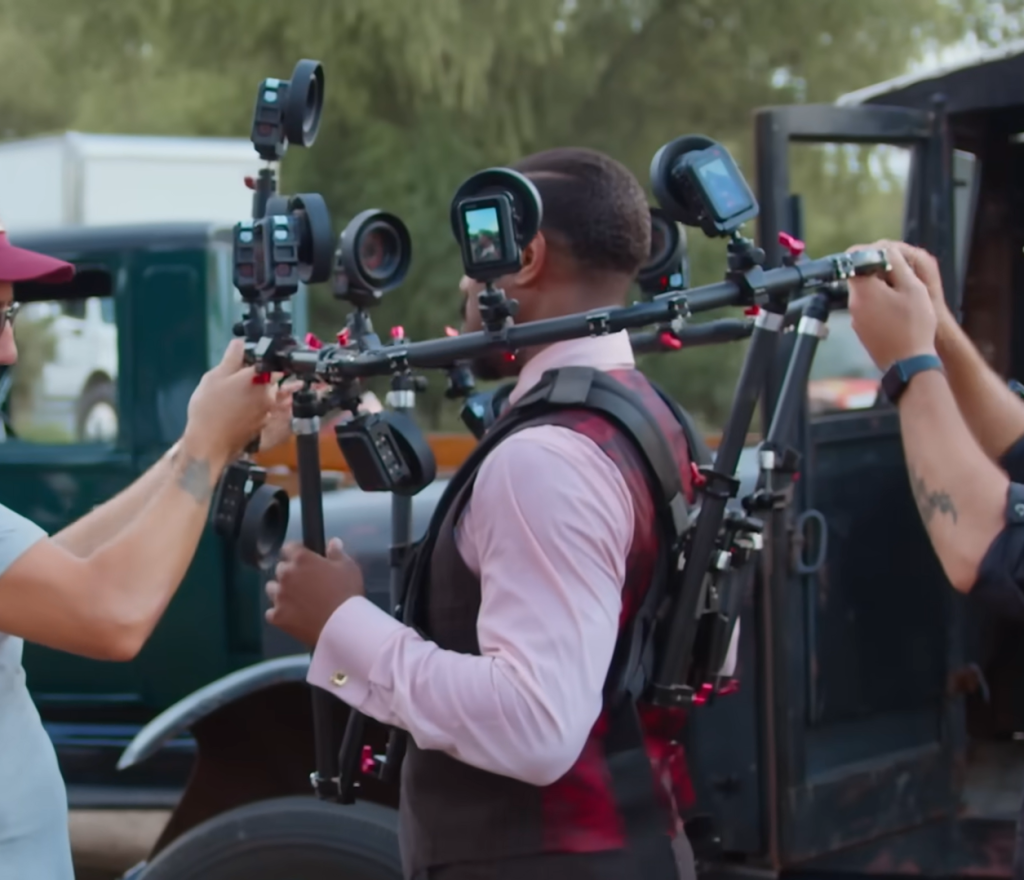
Creating believable twin performances for Michael B. Jordan was a major challenge for visual effects. Michael R. talked to Autumn about whether the 65mm IMAX format was a good fit for this. They decided to use different techniques, like split-screen composites with a techno dolly for repeated shots and a shoulder-worn rig for complete head replacements on a stunt double.
The Halo rig features a carbon fibre ring mounted on the shoulders of actors. This rig contains 10-12 action cameras positioned to capture data used to map a 360-degree view of the performer’s face onto his stunt double, capturing all their emotions and facial details. This information is essential for creating an accurate and lifelike recreation of the scenes.
A fundamental aspect of the Halo rig is its mobility. After filming the principal shots for a twinning scene, they easily mounted the rig on the actor’s shoulders. This allowed him to reproduce his performance alongside one of his stand-ins or body doubles during a different angle of that take. He stressed the need to show the twin characters clearly while also subtly hiding the techniques used to differentiate them.
Panavision Sphero 65 Lens
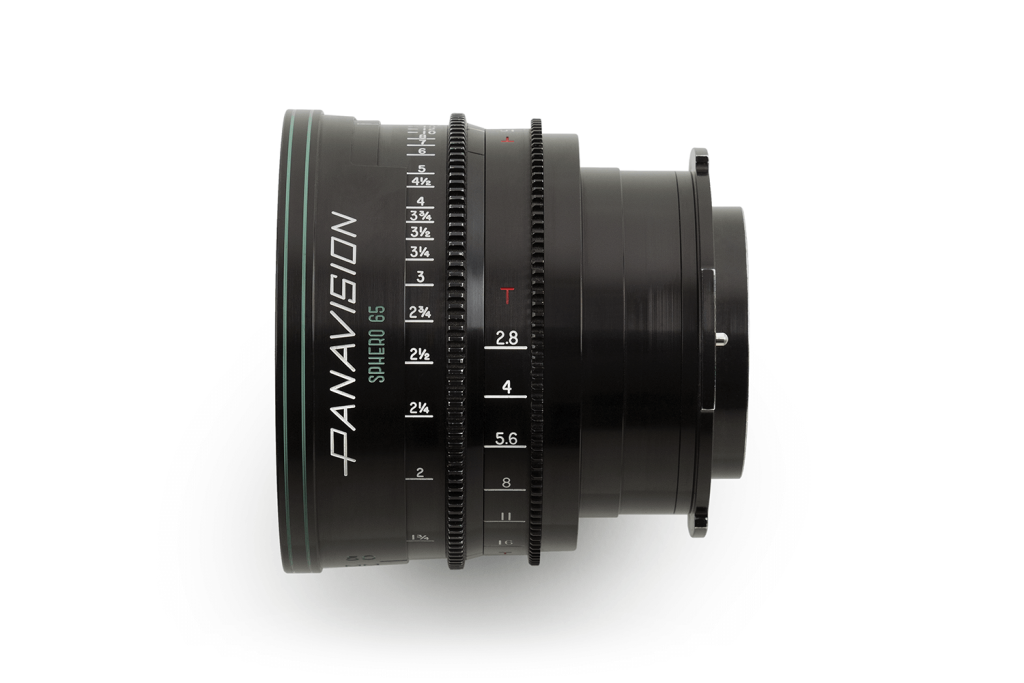
The Panavision Sphero 65 large-format lenses are expertly crafted to deliver exceptional performance in filmmaking. With specially modified coatings, they are less susceptible to flare and glare, allowing for clear, vibrant images. These vintage Sphero 65 lenses provide a distinctive classic aesthetic, rendering skin tones with a warm, natural quality. They also exhibit subtle aberrations that add character to the imagery, while their beautifully rounded out-of-focus areas create a soft bokeh, enhancing the visual appeal of any scene.
These features distinguish them from the more sterile appearance often associated with clinical large-format lenses. The lenses exhibit a moderate focus roll-off, creating a gradual transition between in-focus and out-of-focus areas, while their thoughtfully managed layers of contrast contribute to a rich visual depth.
Panavision Ultra Panatar Lens
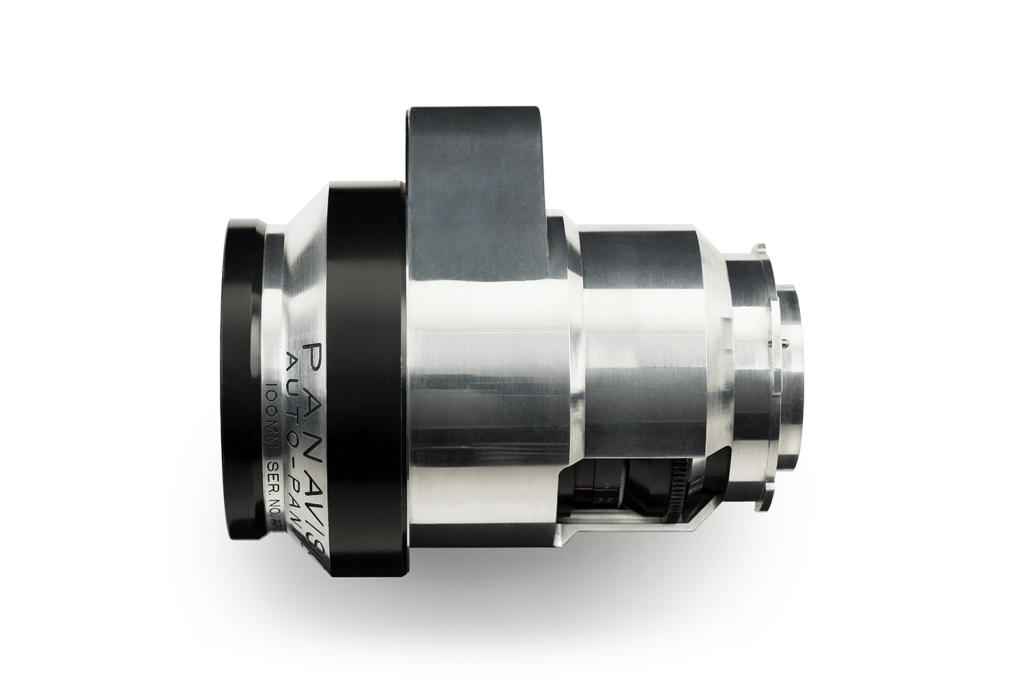
Panavision Ultra Panatar lenses capture images that exude a soft, glamorous, and timeless aesthetic. With a distinctive 1.3x anamorphic squeeze ratio, these lenses offer the artistic qualities typically associated with traditional anamorphic photography while maximizing the use of modern digital sensors’ capture area. Unlike standard anamorphic lenses that rely on spherical mechanisms, Ultra Panatar lenses utilize cylindrical components for focusing, which significantly enhances the characteristic anamorphic look, resulting in images that carry a unique blend of elegance and cinematic flair.
The Ultra Panatar anamorphic lenses are a remarkable collection offering nine distinct focal lengths that span from 35mm to 300mm. These lenses are designed with a unique elliptical bokeh that has been expertly crafted to mimic the aesthetic of lenses with a higher compression ratio, delivering stunning visual effects. Ideal for filmmakers and cinematographers, the Ultra Panatars are compatible with any camera that supports Panavision’s System 65 camera mount, enabling versatile and high-quality image capture across a range of projects.
Other Lenses
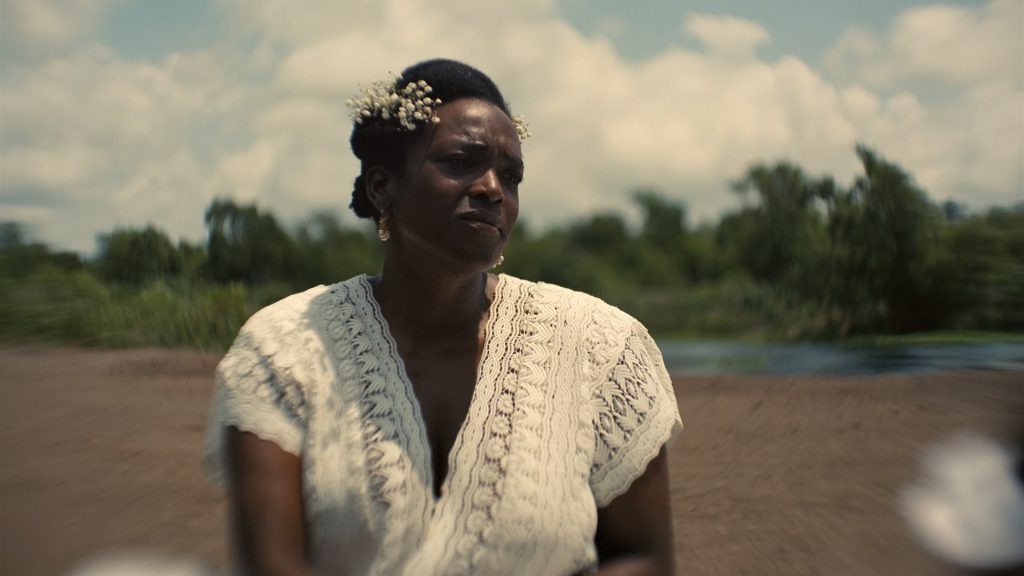
The Panavision Company manufactured a modified 80mm Petzval cine lens with significant field curvature, which made the centre of the image sharper and the edges softer. This was used for the dream sequence at the end of the film.
The Canon EF 1200mm f/5.6 L USM lens was also used. It stands as the longest lens in the world equipped with full autofocus capabilities. This remarkable super-telephoto lens has interchangeable lenses designed for AF SLR cameras at the time. Its impressive focal length allows for the photographing of distant subjects with extraordinary clarity.
The lens features an advanced ring USM (Ultrasonic Motor) that delivers not only rapid but also silent autofocus capabilities, ensuring that photographers can capture fleeting moments without alerting their subjects or disturbing the environment.
It produces sharp, professional-quality images that satisfy the highest visual standards. This is achieved through the integration of two large-diameter artificial crystal fluorite lens elements, which play a crucial role in eliminating secondary spectrum aberrations, allowing for true colour fidelity and contrast even in the most challenging lighting conditions.
It features a nonlinear focus cam for precise adjustments, a preset focus function for quick access to a set point, and a manual focusing option with three speeds. Also, it includes a one-touch revolving mechanism that facilitates a seamless transition between vertical and horizontal shooting formats, making it as versatile as it is powerful.
Mostly, IMAX (50mm and 80mm) and Panavision Ultra Panatar 1.3x anamorphic lenses were used for shooting the scenes of Sinners.
Aspect Ratio
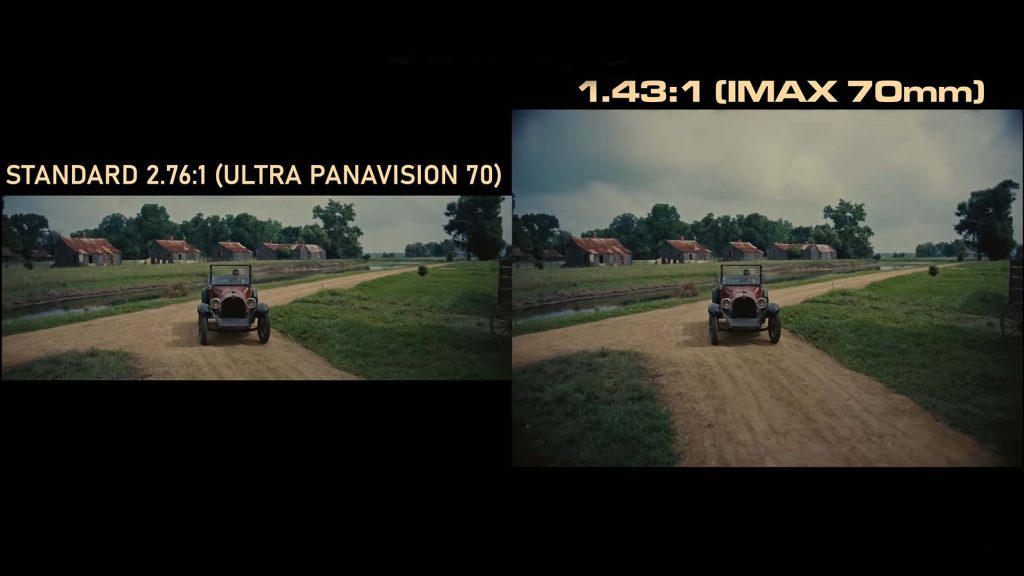
This film is captured on film, known for its incredible dynamic range. They partnered with IMAX for a truly immersive viewing experience. In the IMAX digital screen, you can enjoy two aspect ratios: the 2.76:1 Ultra Panavision format for intense emotional, musical, and horror moments, as well as the full 1.43:1 digital projection, giving you more of the image.
They were mindful of the aspect ratios for cameras. They used the 2.76 system for 65 shots with sound cameras. While filming, the goal was to create a great film and frame scenes emotionally without overthinking. It was important to ensure close-ups were properly framed, especially when focusing on the 2.76 cut. Ultra Panavision 70 allows for a wider frame, but IMAX film cameras produce a greater height. The change in systems allowed for a different emotional connection with the space.
Ultra Panavision has a wide-screen format with an aspect ratio of 2.76:1, and IMAX has a ratio of 1.43:1. The film has been released using both aspect ratios. This process was quite complicated. Both formats are rare and provide unique viewing experiences. One of the many benefits of the large format was showing off the colours and textures in such vivid detail.
Format
The team initially intended to film in 16mm and then 35mm, but ultimately decided to use two 65mm formats following a suggestion from the studio. Coogler was particularly attracted to the 2.76 format because it effectively captures the expansive flat horizons of the Mississippi Delta. While filming in 65mm appeared more complex, the overall process was similar to other film formats; it just required more attention to detail.
In the opening shot, they compared two types of film formats: IMAX and Ultra Panavision. IMAX has 15 perforations per frame, while Ultra Panavision has five. They typically shoot at 24 frames per second, which makes sure that each frame moves steadily through the camera or projector.
They used Kodak Vision3 500T for everything: the 5-perf and 15-perf, for day exteriors, night exteriors, and interiors – everything. By doing that, there was consistency in the grain structure. Also, it creates a smoother workflow with the camera department by sticking to the same stock throughout the entire film.
Kodak offered two notable film stocks in 65mm format: the 5219 and the vibrant Ektachrome. The Ektachrome was particularly groundbreaking, as it was the first large format film capable of capturing the lively scene of workers joyfully leaping from a truck and striding toward the camera. These moments, filled with energy and emotion, were framed beautifully, resulting in portrait-like shots that conveyed the spirit of the workers and the joy of the moment.
500T film stock was used to shoot day exteriors for added texture. Shooting with a high ASA setting for daytime scenes is challenging because you need to use more neutral density (ND) filters on the camera to achieve the desired exposure. This makes it harder to see through the eyepiece. Day exteriors were underexposed to contain shadow detail and density.
